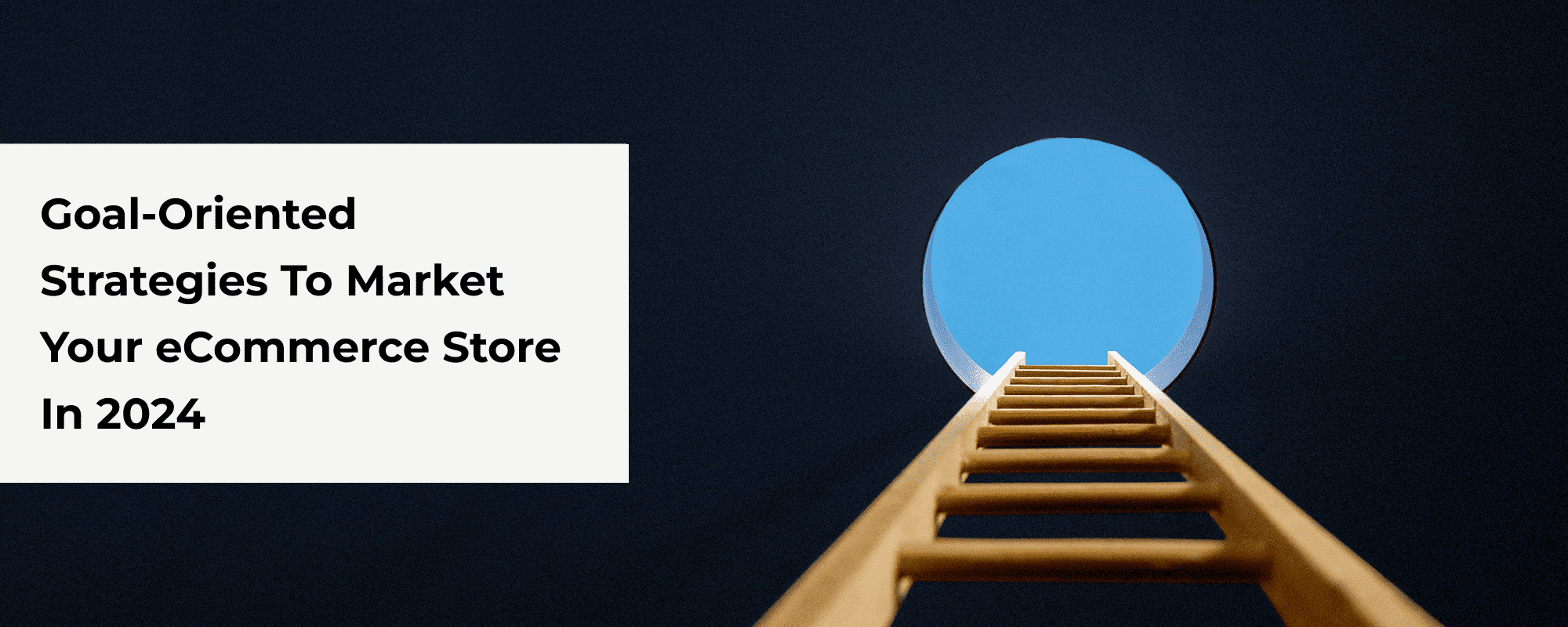Last Updated: 11th January, 2024
When you set out to market your eCommerce store, it’s not enough to just say you want to be big. There are many successful stores out there. You should have some particular goals in mind.
Goals help you gauge the effectiveness of your marketing strategies. They also make it easier for you to create and adjust your long-term plan.
As you build an eCommerce store in 2024, here are ten key goal-oriented marketing strategies to try out:
1. Draw In Desired Traffic
With your store up and running, a lot of your first visitors will be a random bunch. Try to get more people from a particular group to visit the site. Your store may be largely into selling customized uniforms to other businesses in bulk.
Or it could be offering mainly women’s wear. In either case, if the majority of your traffic is teenage boys, you need to switch up. Use Google Analytics to find out certain qualities about your traffic like age, gender, devices used, location etc.
Revise your strategy to get your store the right attention. Mention it in business forums. Be present in social media groups dedicated to subjects relating to what you sell.
2. Expand Your Email List
Once you start getting traffic to your store, sales may not immediately shoot up. Establish relationships with these people. Go through your website data to find out their behavior, like what they are looking at.
Figure out other attributes like their location and age. Place CTAs in the right places, requesting them to sign up for a newsletter. Give them good reasons.
This could be updates on latest offers and product availability. It can also be a discount on their next purchase.
With an email list, you can set a number of people you want to add each month. You can also set a target for how many return visits and sales you want to get from your list.
This helps you learn what you need to do for different groups of people to get them to buy.
3. Rank Higher In Searches
SEO (Search Engine Optimization) is a good way to get a lot of organic attention for your site. It mainly involves getting your site more likely to appear when people search for products you sell.
Use tools like Ahrefs to find out which words shoppers type the most into search engines when looking for products you have. Perform a search and see whether your store makes it to the first page.
Revisit your store and change your titles and other phrases to be more similar to the keywords. Work on the linking between pages and other sites too. Conduct these search tests until you appear higher up.
You can set your goals to be about a position on the first page. Additionally, try singling out particular keywords and become the most common search result for those.
4. Enhance Your Website
This largely caters to people who shop on the go. To attract more of these shoppers, make your site smooth on mobile devices. Run speed tests using tools like Pingdom or Google PageSpeed.
Find out the areas in which you’re getting bad grades and make changes. Perform the thumb zone test. This will let you know how easy it is for someone to navigate your store on mobile.
Use Accelerated Mobile Pages (AMP) if available for your platform. Set targets for metrics like number of mobile users, and study how page speed and size affect them.
Resize CTA buttons and reposition other features to limit scrolling and zooming. This may require changing your entire ecommerce store theme.
5. Put Out Targeted Ads
The benefit of these ads is that you can pinpoint a specific group of people you want to reach. Set up social media pages for your store. Create ads on platforms like Facebook.
Apply certain settings to target people based on their interests, education etc. Check to see how many people the ad reaches and how many click on it. Compare these numbers with how much you spend and how long you run the ads.
This information will help you come up with a good budget for getting a particular number of store visitors. Play around with the variables until you find the right mix. Store those presets for future use.
6. Boost Sales
This is usually more of an end goal but in many cases, it fits into your marketing. For example, with Google and Instagram shopping, you can advertise and sell in one go. It’s basically turning your would-be ad space into a storefront.
Open business accounts/pages on different social media sites like Facebook and Instagram. Share photos of your products with tags embedded. These will show price information with the option to buy when clicked on.
Do the same on Pinterest by setting up buyable pins. Monitor the amount of sales you get from different platforms. Use this data to set goals for how much content to share, and where to share more.
7. Promote Products And Categories
A common and effective goal-oriented strategy in ecommerce marketing is product promotions. Study the data from your store about performance of product listings.
Don’t focus on sales alone. See how many shoppers manually search for a product. How many read its description. How many add it to the cart, etc. Rearrange site areas like categories to give struggling products more visibility.
Attach offers like free shipping, slashed price periods or bonus goods to these listings. Create attractive landing pages placing focus on these promotions. Design artwork about the promotions and share it on social media.
Come up with milestones for product page visits and purchases. Adjust their presentation on the site and elsewhere until you hit those milestones.
8. Get Rated
A lot of people shop according to ratings and reviews of products. Some even look for products directly from review sites. Send out free samples of your products to different review communities.
Put CTAs on your store asking people to rate your products and the shopping experience. Gather this information from external sources like TrustPilot and also from your site.
Display it in the right places. This could be star ratings next to product names, testimonials on your homepage, and other ratings at the checkout. Aim for a higher number of reviews to make the information more credible.
Keep reaching for more stars. Improve your service to get glowing testimonials.
9. Seek Referrals
People take their friends’ and relatives’ words seriously. Try to use the visitors you receive to get more visitors. Start a referral program. When someone creates an account, views products or purchases give them a referral code.
They can share this with friends. If those people use it, you award that initial visitor points redeemable on the next purchase, or some other type of reward. This also helps you get some free advertising from the person you gave a code.
Track the number of referrals you get per code given out. Figure out the number of sales you want to get through these codes. Adjust how many you give and the awards attached to ensure that you still get a decent markup.
You can also give codes that are restricted to one account opening. There are apps like ReferralCandy that can help with all this. Make sure you create awareness for the referral program both on your site and on social media.
10. Create And Share Videos
These help a lot with information that is harder to offer easily in text. They are also good for when you want to host/interview a big personality. Pick a type of video you want to produce. It could be a demo, a facility tour, post-purchase etc.
Choose your mode of distribution. Live videos are getting more popular. The live-stream can also be available for re-watching. List all the relevant metrics. These include watch rate, view count, click-through and conversions.
Place CTAs within the videos or in the video post captions. Point people towards the store, a particular product or discount. Check how many people watch. Find out for how long they watched before stopping. How many took action.
Alter the CTAs, video lengths, intros, guests, number of avenues of distribution. All these will help you realize varying results and guide you in setting new goals.
In Conclusion
When it comes to goal-oriented strategies for eCommerce marketing, here are some things to always remember.
First, they must have measurable variables. There should be numbers that can be counted. View counts, page speed, email subscribers, etc. All these can be represented as numbers.
Secondly, you should have targets in mind. Set a number you want to hit within a given time. Keep increasing the target whenever you hit the one you set.
Third, learn how to track. Educate yourself on the different analytical tools out there for each piece of data you’re seeking. Always compare all numbers that are related, to find out whether your actions are the ones actually producing changes.


